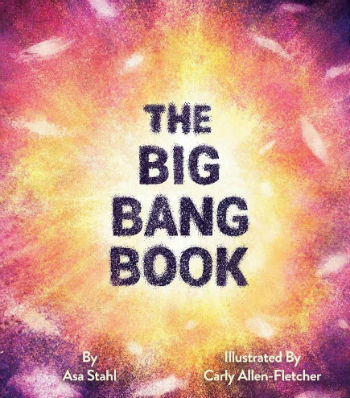My job is to detect planets around newborn stars. I study astrophysics because I love astronomy's outlook, the way it places us in awe-inspiring scales of space and time. As I wrote The Big Bang Book, I found that translating the adult world into approachable language for children does something similar: children's books simplify and lend us perspective, just like science explained well.
 Science popularizers always walk a thin line as they try to trim complexity without compromising substance or accuracy. I discovered that writing a picture book involves a comparable balancing act, rationing words for effect and deciding when to let illustrations do the talking. I learned to let the picture book format guide me toward the brevity and clarity prized by pop science. After all, everyone appreciates accessible language--children simply insist on it.
Science popularizers always walk a thin line as they try to trim complexity without compromising substance or accuracy. I discovered that writing a picture book involves a comparable balancing act, rationing words for effect and deciding when to let illustrations do the talking. I learned to let the picture book format guide me toward the brevity and clarity prized by pop science. After all, everyone appreciates accessible language--children simply insist on it.
In both popular science and children's books, writers can have an unfortunate tendency to condescend or fake enthusiasm. To avoid that, I chose instead a tone of informed wonder: the hushed voice that points out a constellation on a starlit night. I use the same tone when I speak to adult audiences, letting passion color my words and hope the excitement is infectious and the sense of awe shared.
People listen to that voice, children especially. They are natural scientists, unafraid to interrogate the world around them. And that is the core of the overlap between pop science and children's books: the relentless push to learn about the world. I hope my writing rewards that curiosity, not by supplying all the answers, but by inspiring the reader to never stop asking questions. --Asa Stahl
Stahl is a Ph.D. student in astrophysics at Rice University, where he searches for planets around newborn stars. The Big Bang Book is available now from Creston Books.


